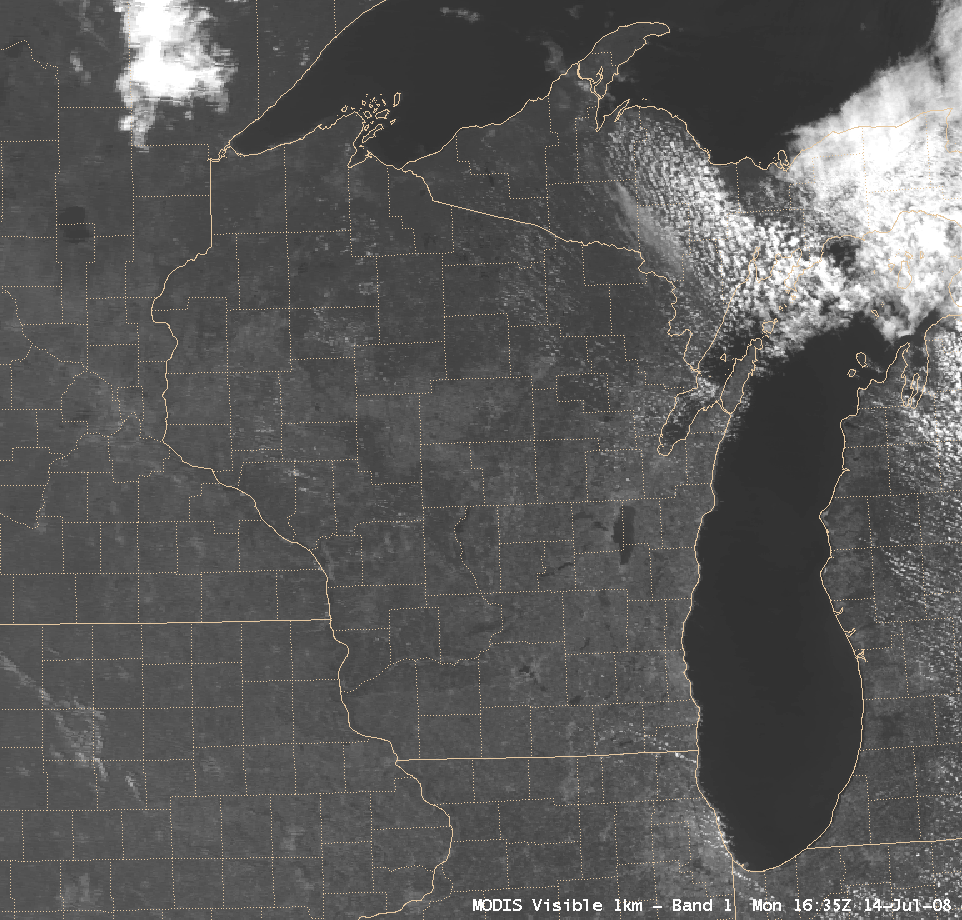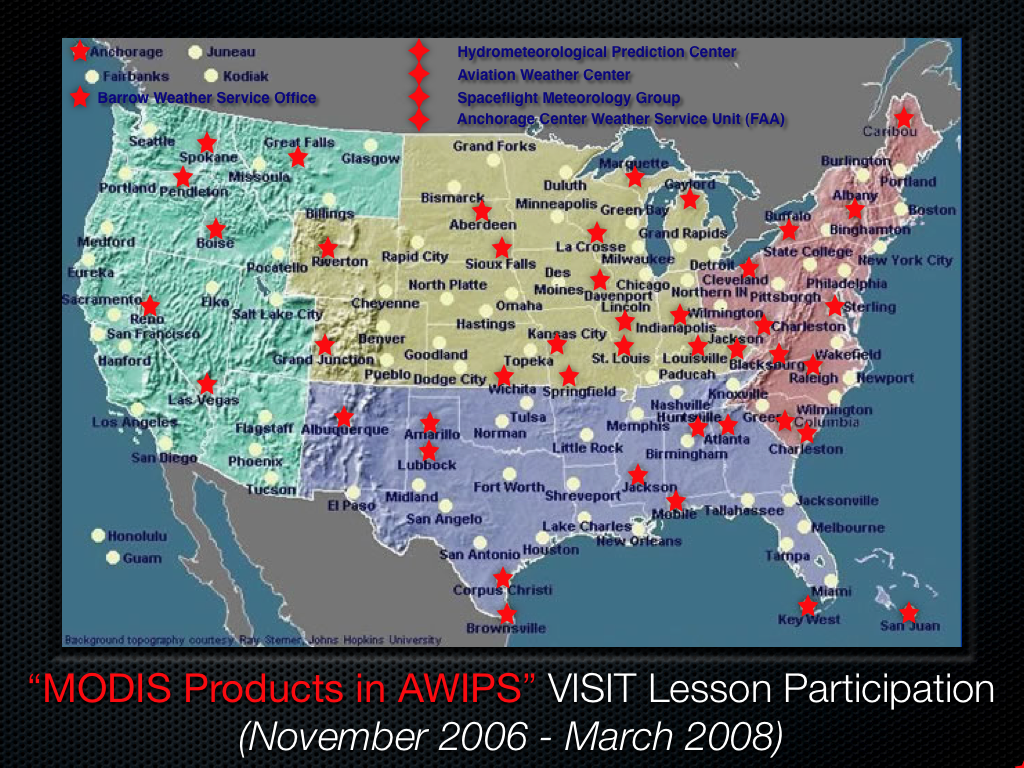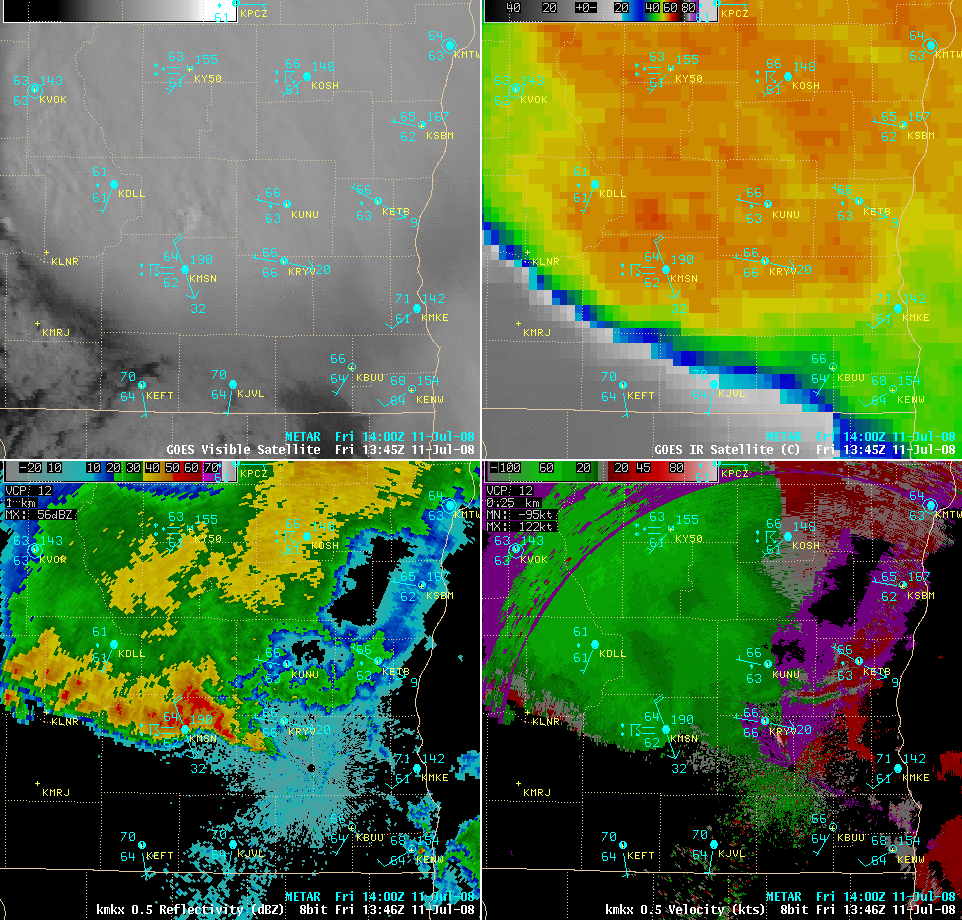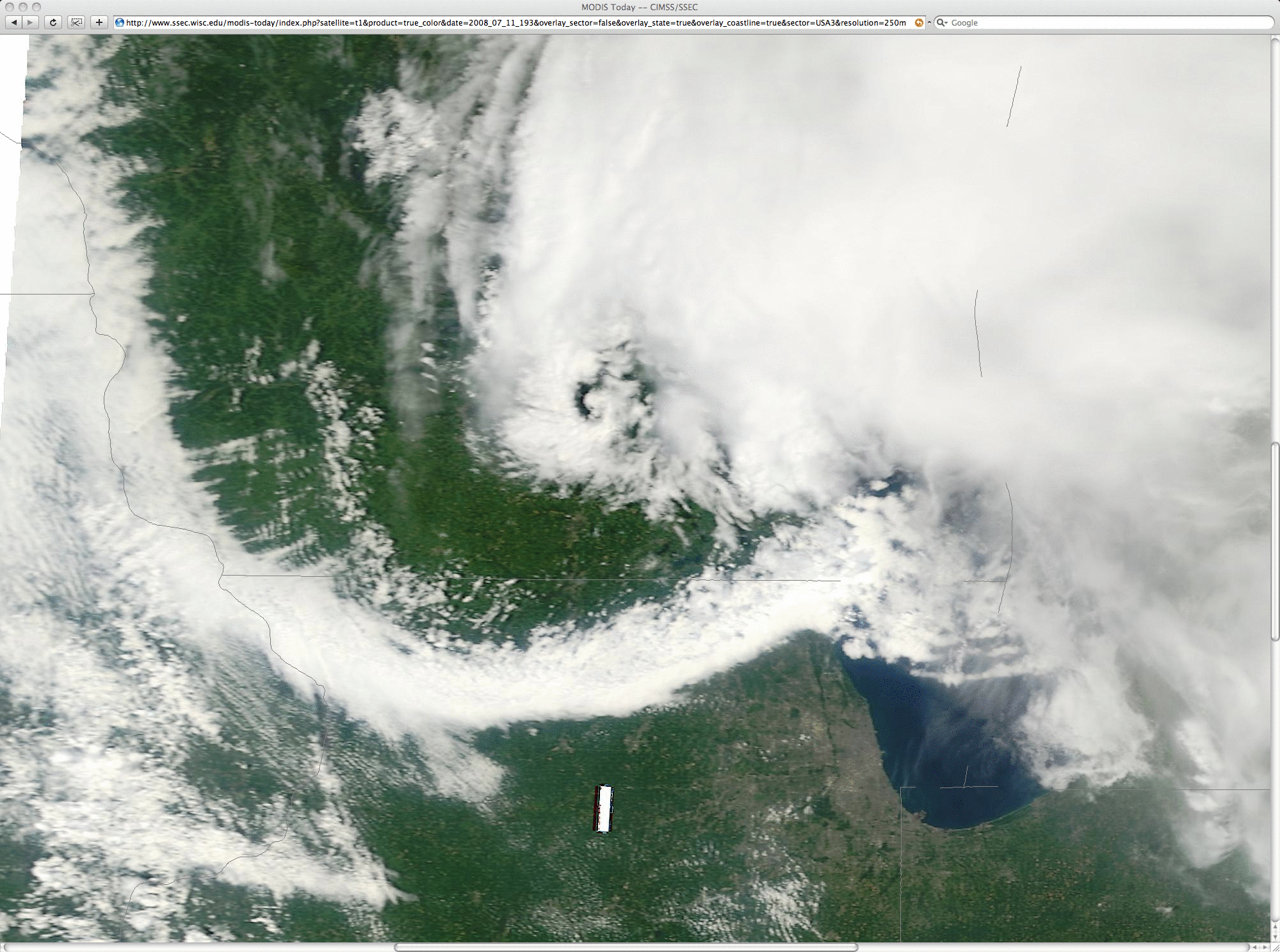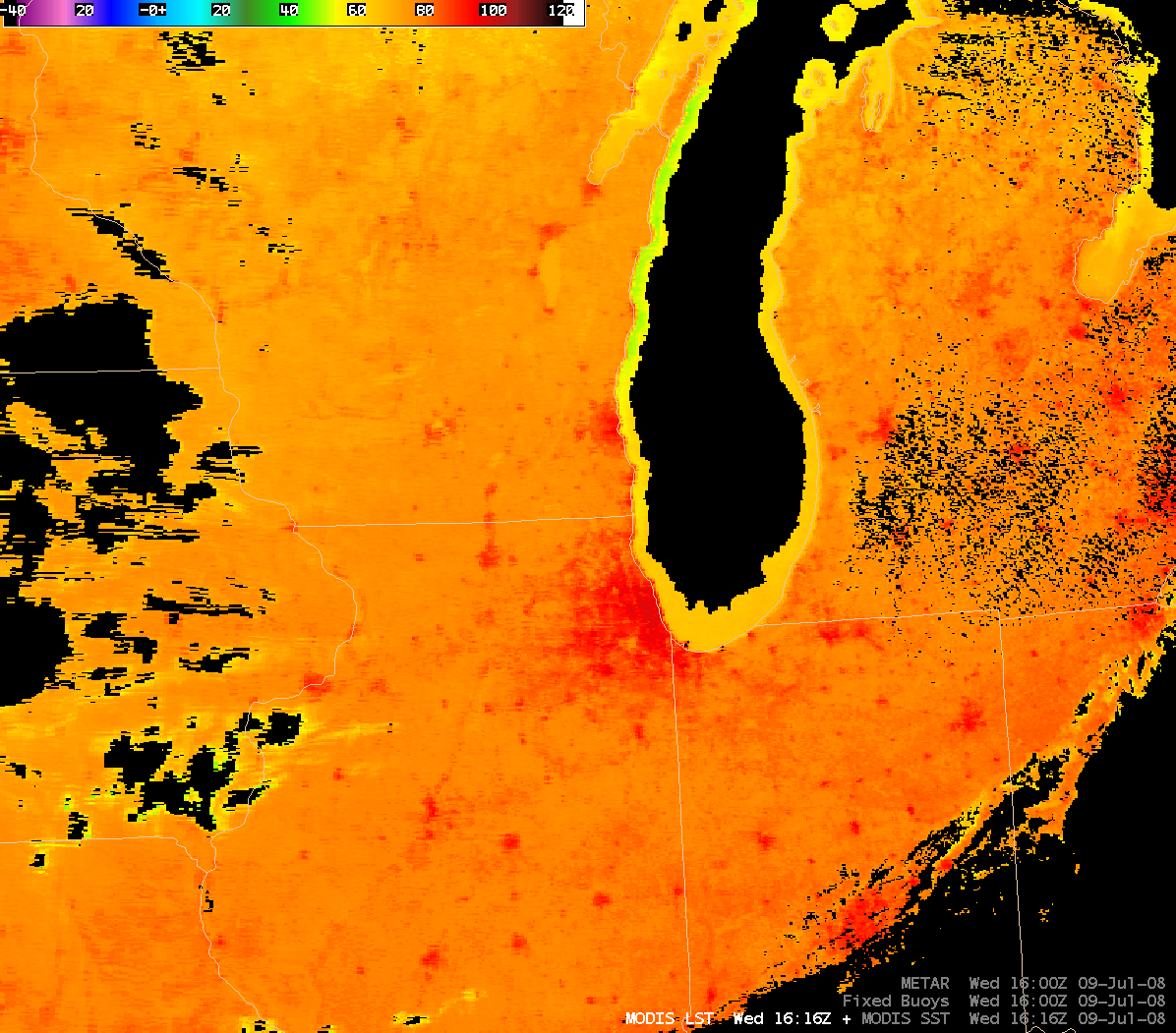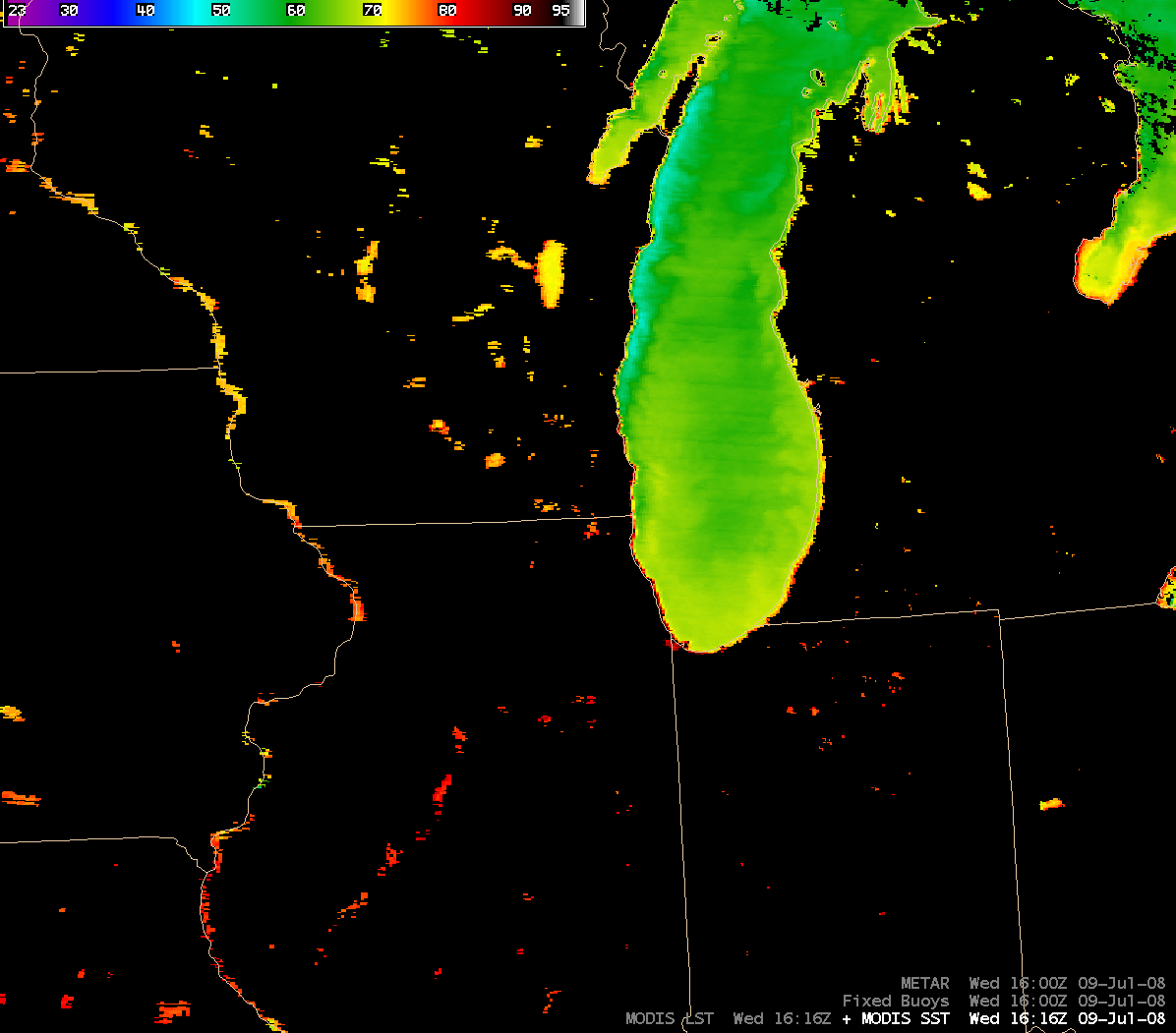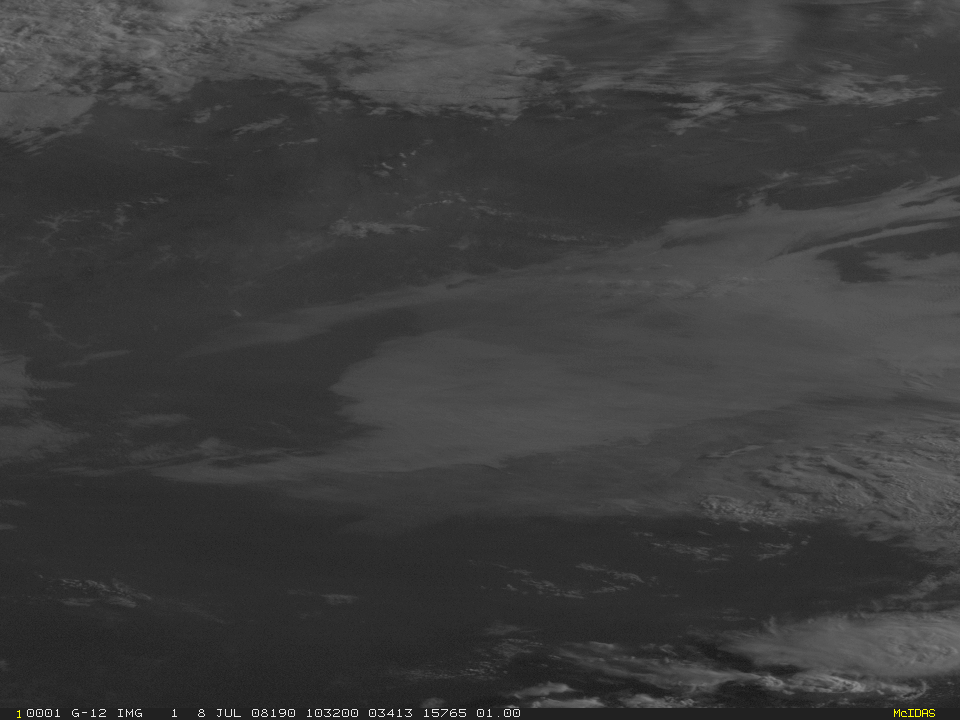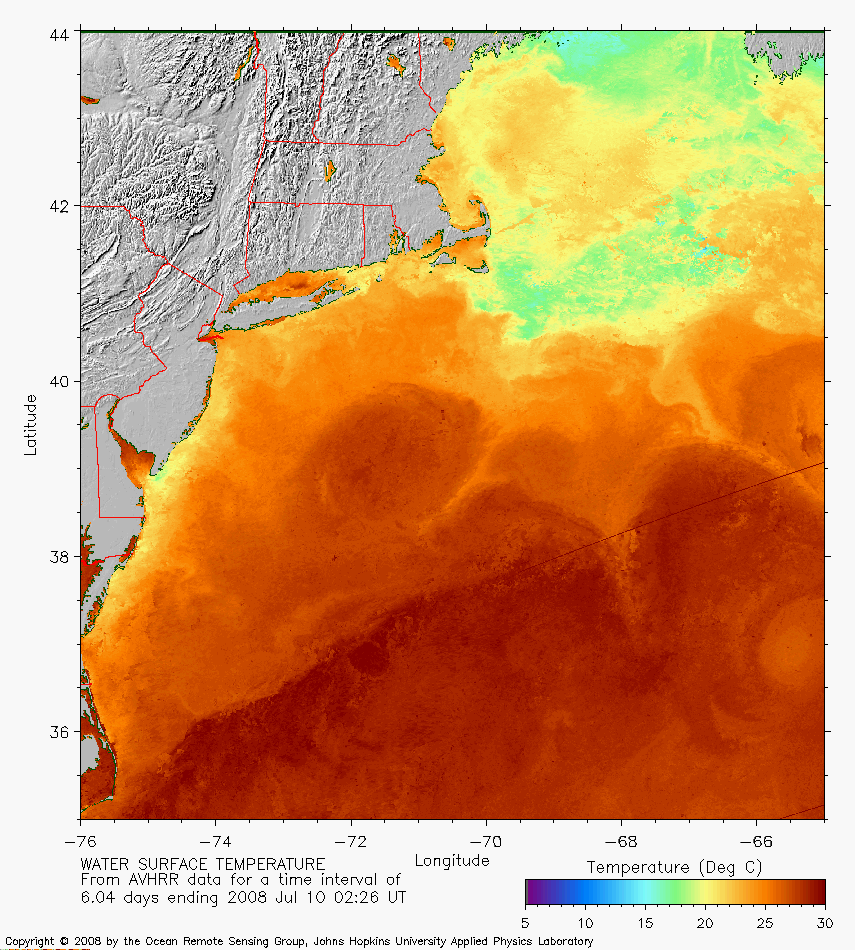July 2008 marks the 2-year anniversary of the beginning of the CIMSS / SSEC effort to provide MODIS imagery and products in AWIPS. Mostly cloud-free conditions over Wisconsin on 14 July 2008 allowed for a nice sample of 12 of these MODIS images and products (above), which are all available to NWS forecast offices to add to their local AWIPS workstations (via Unidata LDM subscription):
- 0.6 µm Visible channel (MODIS Band 1)
- 1.3 µm Cirrus detection (MODIS Band 26)
- 2.1 µm Snow/ice discrimination (MODIS Band 7)
- 3.7 µm Shortwave IR (MODIS Band 20)
- 6.7 µm Water vapor (MODIS Band 27)
- 11.0 µm IR window (MODIS Band 31)
- Land Surface Temperature (LST) product
- Sea Surface Temperature (SST) product
- Normalized Difference Vegetation Index (NDVI) product
- Cloud Phase product
- Cloud Top Temperature product
- Total Precipitable Water (TPW) product
(Note: a MODIS 11.0-3.7 µm Fog/Stratus product is also available on AWIPS; however, this is a night-time only product, so it was not included with the other daytime MODIS images shown above)
These MODIS images and products in AWIPS offer NWS forecasters an opportunity to begin evaluating and using some of the types of data that will be available with the Advanced Baseline Imager (ABI) instrument on the upcoming GOES-R satellite (scheduled to be launched in 2015).
To date, 49 NWS forecast offices have participated in the “MODIS Products in AWIPS” VISIT distance learning lesson (above) that has been offered on the VISIT training calendar since November 2006. As a result, 25 NWS offices have added the CIMSS MODIS imagery and products to their local AWIPS workstations (below), with MODIS being mentioned in 56 NWS Area Forecast Discussions so far.
View only this post Read Less


